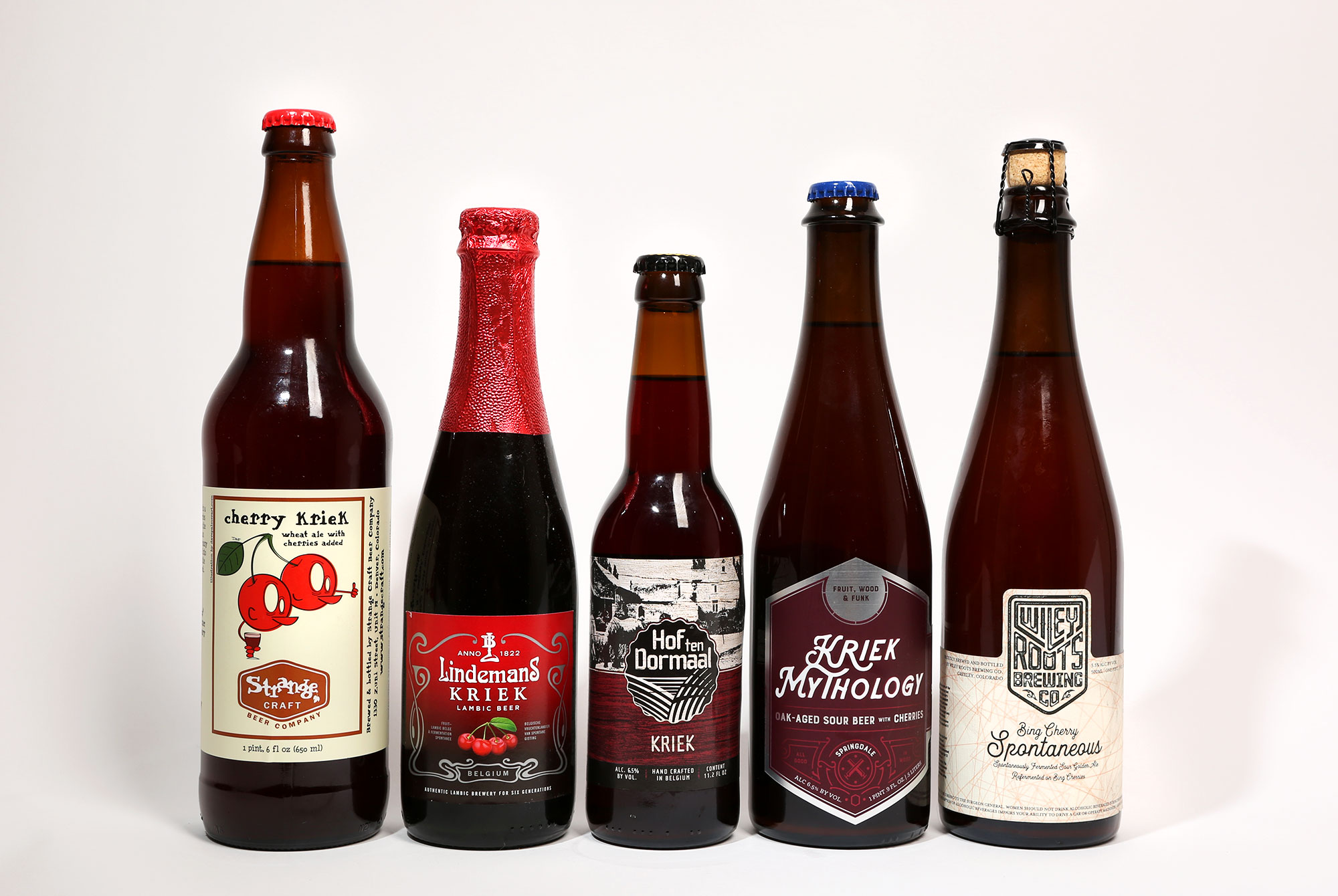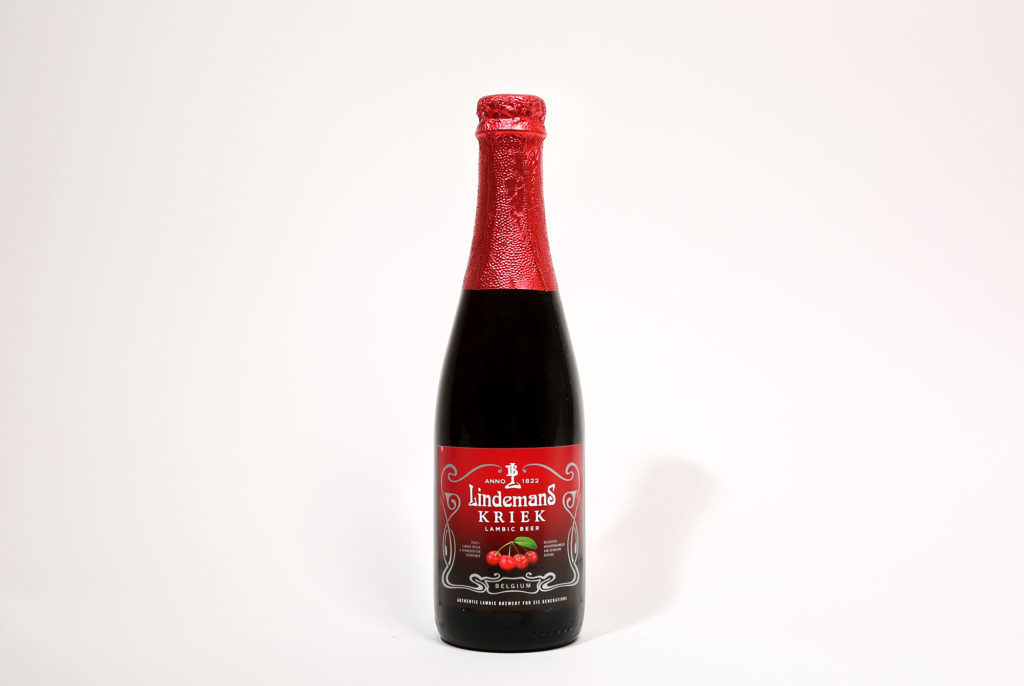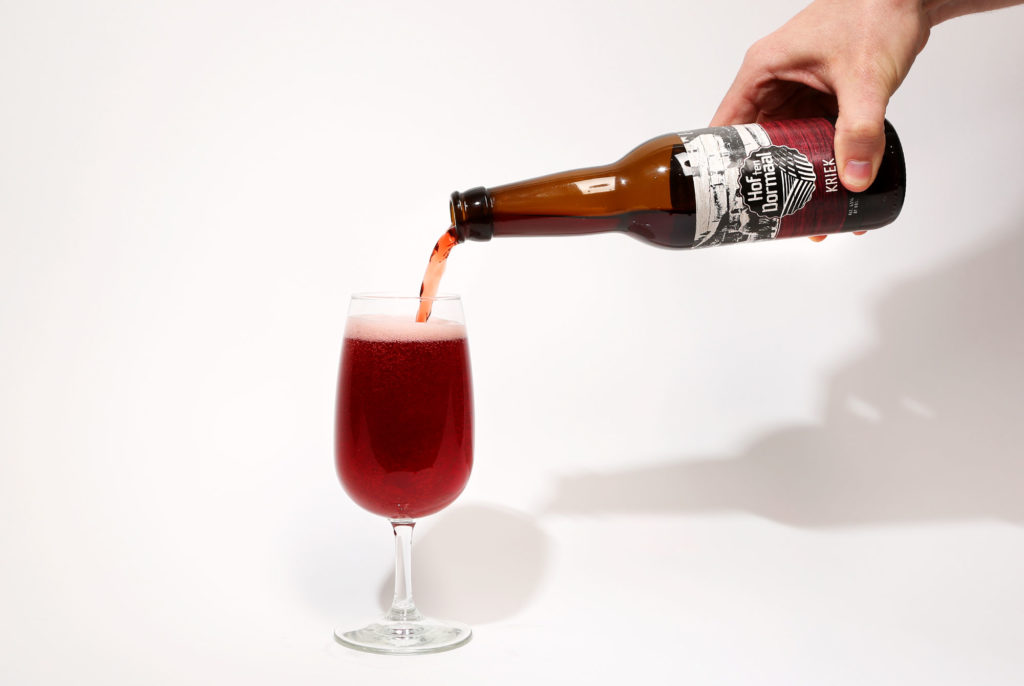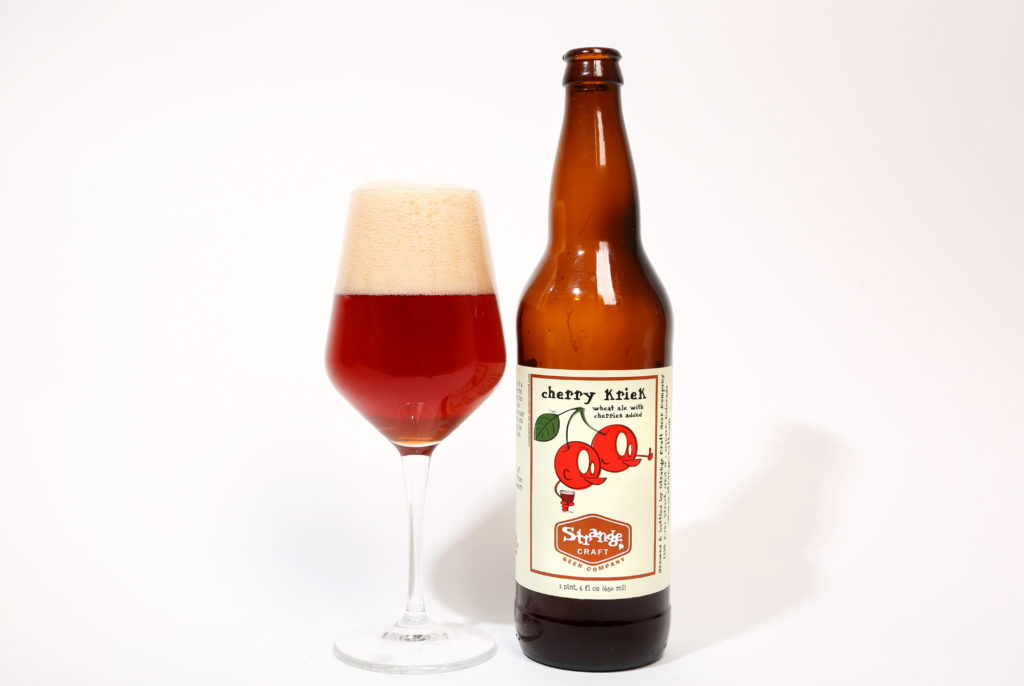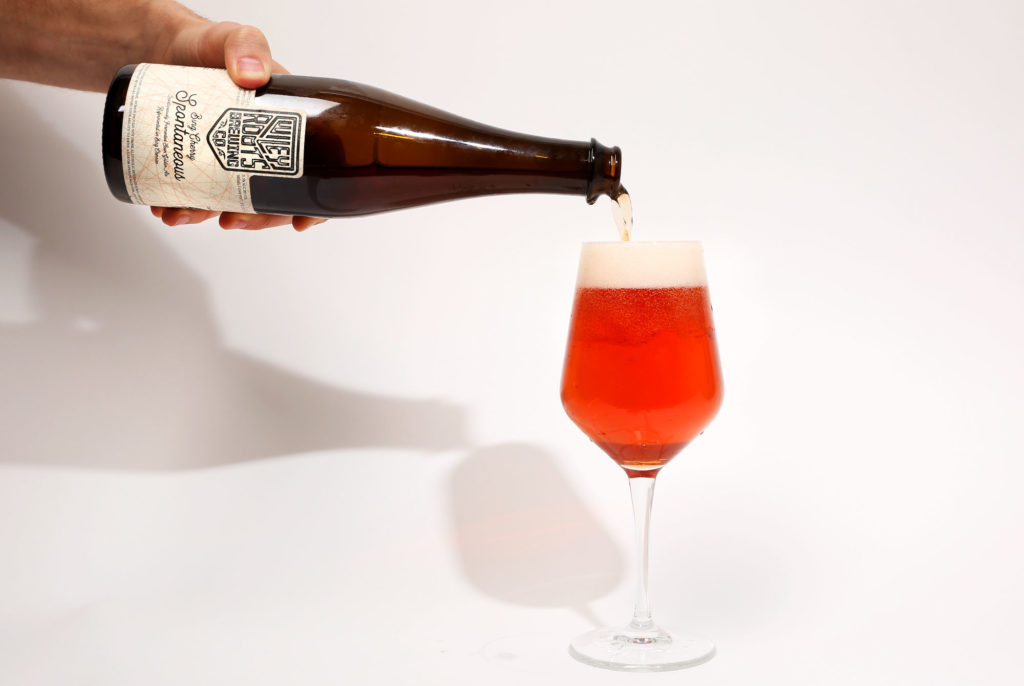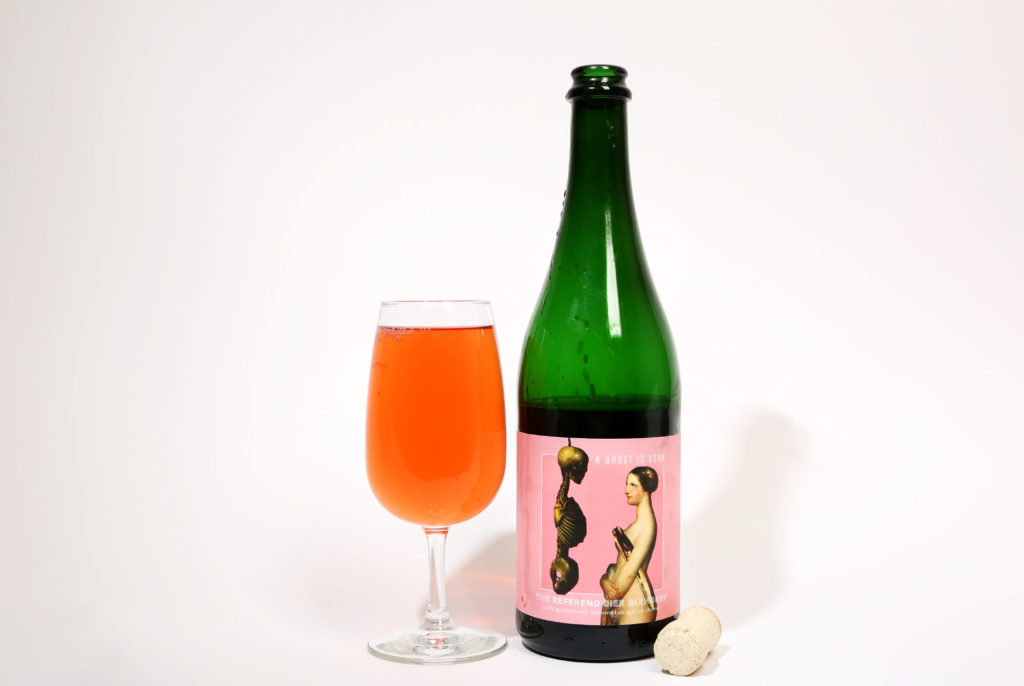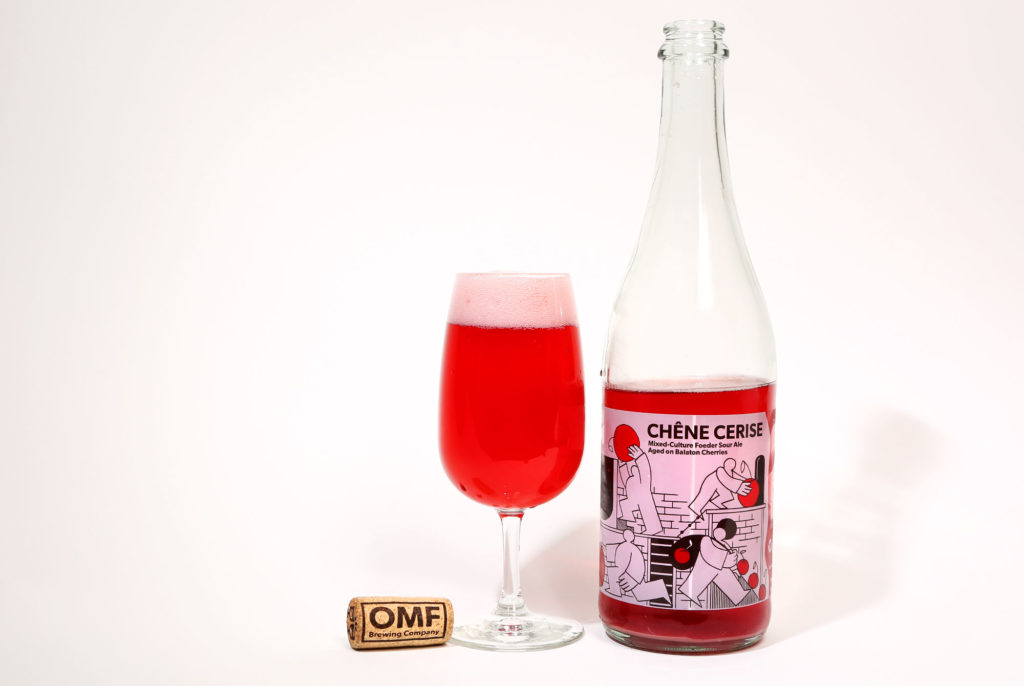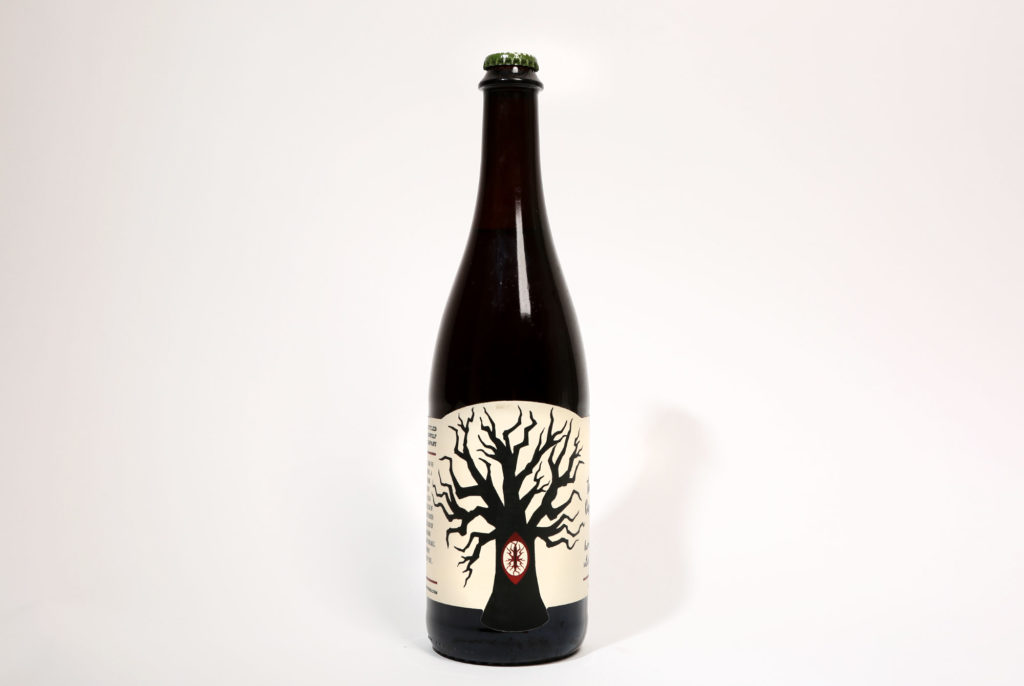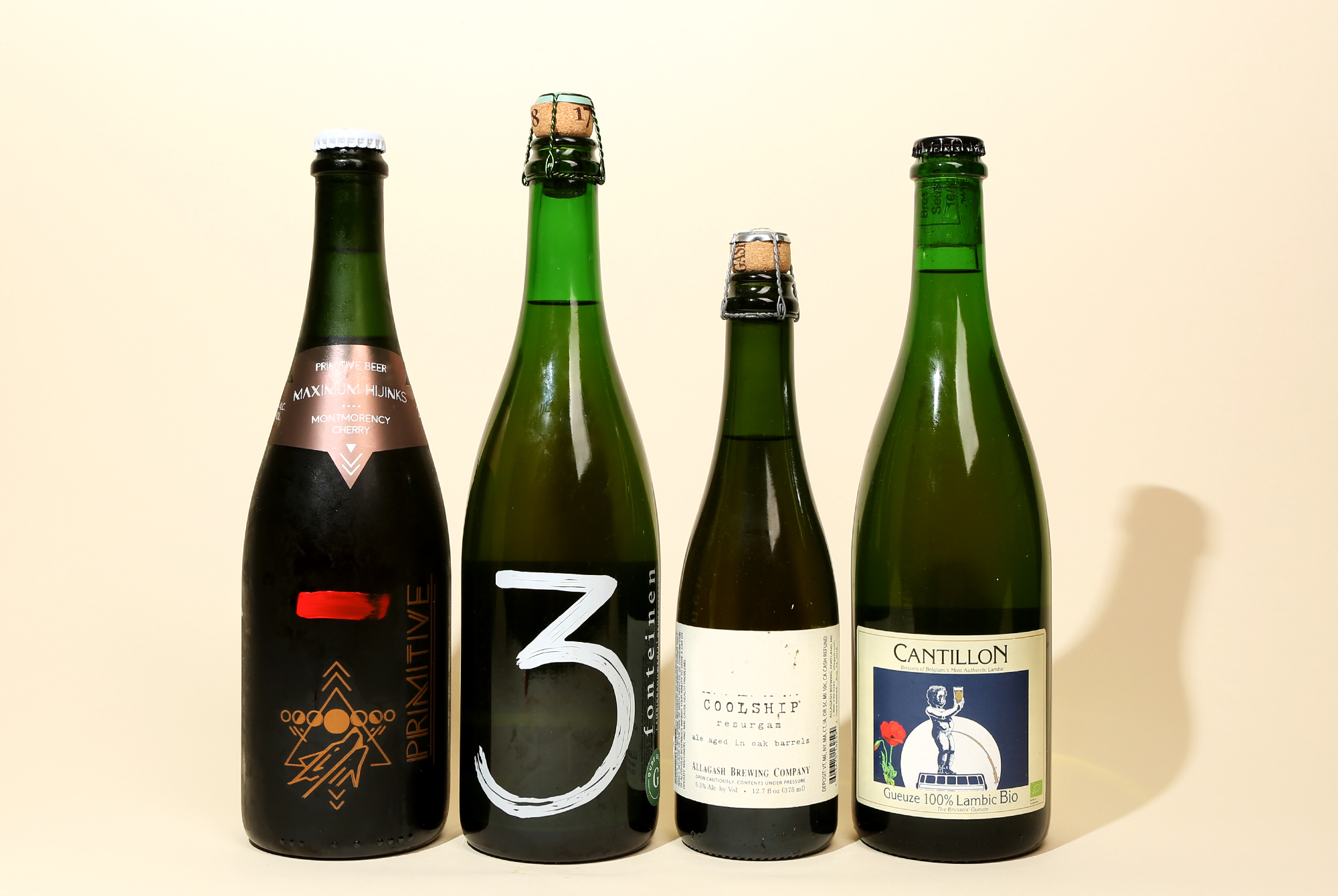Shop
What Is a Kriek Beer?
We're cheery for cherry beer!
Looking for More Like This?
One of my first experiences with a Kriek was at The Sovereign, the Belgian beer bar in Washington, D.C. I was afforded the chance to pick from the extensive cellar collection at one of the best beer bars in the country. Who could pass that up?
Walking into the temperature-controlled room, I saw shelves packed to the brim with some of the world’s best beer. It was stunning. After sampling De Ranke, Cantillon, and Drie Fonteinen, the bartender offered me a Lindemans Oude Kriek Cuvée René.
I’d had the style in the past, but I’d never considered each sip as I did at The Sovereign. It was challenging but in a good way. I’ve always found the style aggressive—it has a tartness that cuts deep into the enamel. But the complexity and depth continued to draw me in sip after sip.
Years later, I looked through the Hop Culture beer collection and realized we had a handful of Krieks collecting dust; I thought it would be a perfect time to return to the ‘challenging’ style and address this bright red Belgian beer.
What Is a Kriek?

Photography courtesy of John A. Paradiso
Kriek is a Flemish word that uses cherries—specifically sour Morello cherries. Historically, Krieks were made in Belgium by adding whole or macerated cherries (importantly, though, the pits were intact) to a lambic beer base and letting the beer referment on the fruit.
After sitting for a few months, one blended the beer with fresh lambic and bottled. The style falls into a fruited lambics category, including pêche (peaches) and cassis (black currants).
Belgian breweries like Cantillon, Boon, and Drie Fonteinen have made some of the most well-regarded examples of the Kriek style. The sour cherries used in early Krieks were native to the area near the Senne River valley in the Pajottenland region outside Brussels.
Today, the cherries are more widely available, so you can find Krieks available throughout Belgium, and the style is even recreated here in the U.S.
The American Kriek
“Kriek, in the modern sense, is afforded a wide interpretation as far as I can see,” says Joe Connolly, the national sales director at Jack’s Abby, “from traditional, spontaneously fermented beers aged on whole cherries to vaguely sour beers with a huge dose of jam-like cherry flavor.”
Fruited beers are not a new experience for American beer drinkers. Spontaneously fermented fruit beers have been masterfully reproduced by breweries like Allagash, Homage Brewing, and Une Année, to name a few, and innovative breweries like Burley Oak and Hudson Valley have introduced fruit into their versions of the kettle sour.
But is there an American Kriek?
“I don’t know that there is such thing as an American Kriek,” shared The Referend Bier Blendery Founder James Priest. “The serious practitioners are all blessedly making the best beer they can with the best fresh, local fruit they can, rather than forcing stylistic uniformity.” Perhaps it’s more accurate to refer to American attempts at the style as simply spontaneous cherry beers (as one of our examples does) so they don’t carry the weight and history of the Kriek style, which is specifically Belgian.
Even more critical to Krieks than color, though, is authenticity in flavor. “The style hinges on the quality of the fruit,” Priest contends. “The quality of the underlying beer is important and needs to be complementary, but if it’s even a bit boring, that can be a perfectly serviceable canvas for exemplary fruit. I reject any beer hoping to approximate the character with syrups, flavorings, or extracts. You can’t fake cherry character. … You need real cherries.”
Our 7 Best Cherry Beers
Kriek – Brouwerij Lindemans
Vlezenbeek, Belgium
This is the starter Kriek. You might consider the Oude Kriek Cuvée René that I had at The Sovereign as the grown-up version of this beer. This is a sweeter version of the style, using cherry filtrate and a pasteurizing process. If you want an accessible introduction to Kriek, this is a good one.
Kriek – Brouwerij hof ten Dormaal
Tildonk, Belgium
Another good introductory Kriek, this one from Hof ten Dormaal is more acidic and rustic. After testing the waters with Lindemans’ Kriek, I recommend seeking out this farmhouse version.
Cherry Kriek – Strange Craft Beer Co.
Denver, CO
The name might be a little redundant (‘cherry cherry’) and not technically accurate (just like you can’t make Champagne outside France, you can’t make Kriek outside Belgium), but Strange Craft’s attempt at the style is unique. The aroma has a slight breadiness, and the creamy head almost mimics a fresh cherry pie. Plus, Strange used a dark Belgian wheat beer as the base before adding Montmorency cherries.
Bing Cherry Spontaneous (w/ Our Mutual Friend) – Wiley Roots Brewing Co.
Greeley, CO
This collaboration beer made between Wiley Roots and Our Mutual Friend in 2018 returns to the traditional practice of spontaneous fermentation and uses Colorado-grown Bing cherries. The result is complex; there’s a depth that necessitates consideration and a strong, pleasant tartness. The two Colorado breweries made this beer in a limited run, but if you know someone who still has a bottle and you have a chance to try it, do so.
A Ghost Is Born – The Referend Bier Blendery
Kutztown, PA
The Referend Founder James Priest doesn’t consider this beer a Kriek. A Ghost Is Born is actually made from the remains of a beer meant to mimic the Kriek style more closely.
After aging a spontaneously fermented golden ale in port barrels with whole Balaton cherries and bottling that beer, the barrel—and cherries—were topped off with a spontaneous pale wheat ale. That became A Ghost Is Born.
“By using ‘spent’ cherries, [A Ghost Is Born] carries through only the secondary and tertiary cherry characteristics, not the primary ones,” Priest shared.
The result is still stunning, though markedly different from the other beers we sampled for this piece. A Ghost Is Born didn’t have the savory qualities or density that most Krieks carry, though it still had a wonderful tartness and balanced sweetness that remained refreshing.
Chêne Cerise – Our Mutual Friend Brewing Co.
Denver, CO
Another Our Mutual Friend beer! The anniversary release from Denver’s OMF was a riff on the traditional Kriek style. Instead of a spontaneously fermented beer, the base for Chêne Cerise was a mixed-culture sour aged in a foeder with whole Balaton cherries. Chêne Cerise captures a classic Kriek’s savory, aggressive flavors but balances them with a soft tartness.
The Bearer of the Cup of the Blood of the Ancients – Aardwolf Brewing Co.
Jacksonville, FL
This wasn’t our first time trying this fantastically named beer. I’m not sure if Aardwolf would consider “The Bearer of the Cup” to be in the Kriek category, but this red wine barrel-aged blonde ale received a treatment of cherries and raspberries (raspberries are frequently used in lambic fruiting). The cherry definitely plays a dominant role, though, and seems to fall into the Kriek family tree. A distant cousin, perhaps.
Liked this article? Sign up for our newsletter to get the best craft beer writing on the web delivered straight to your inbox.

